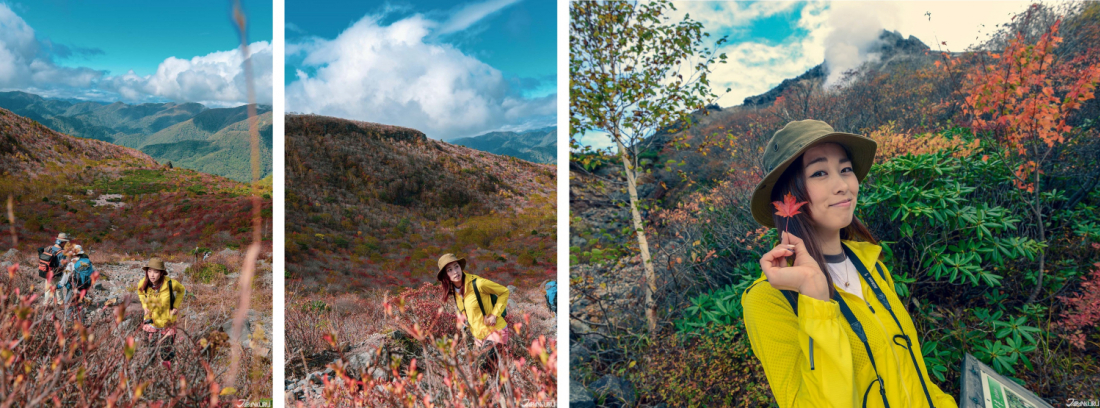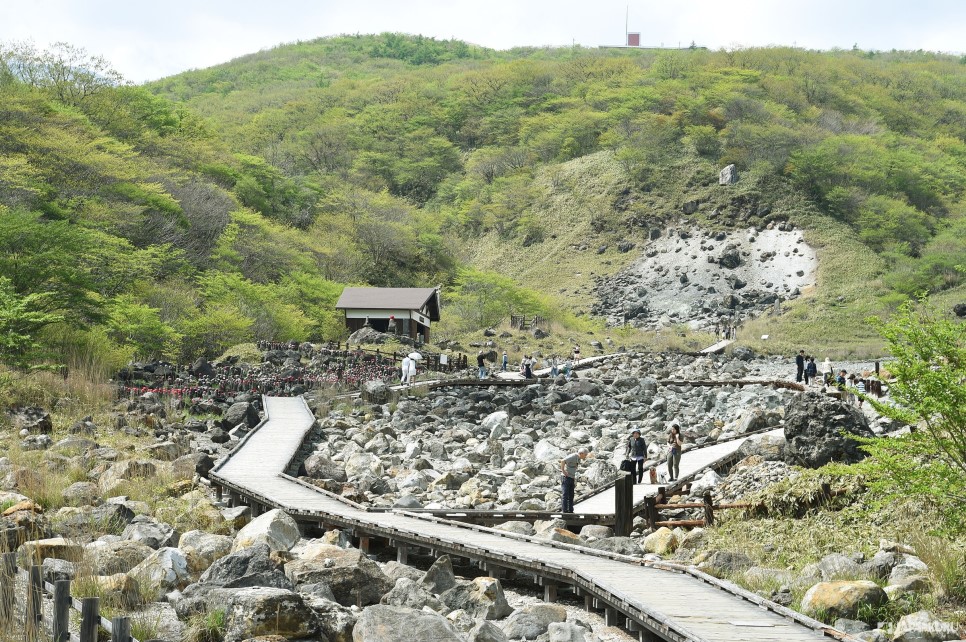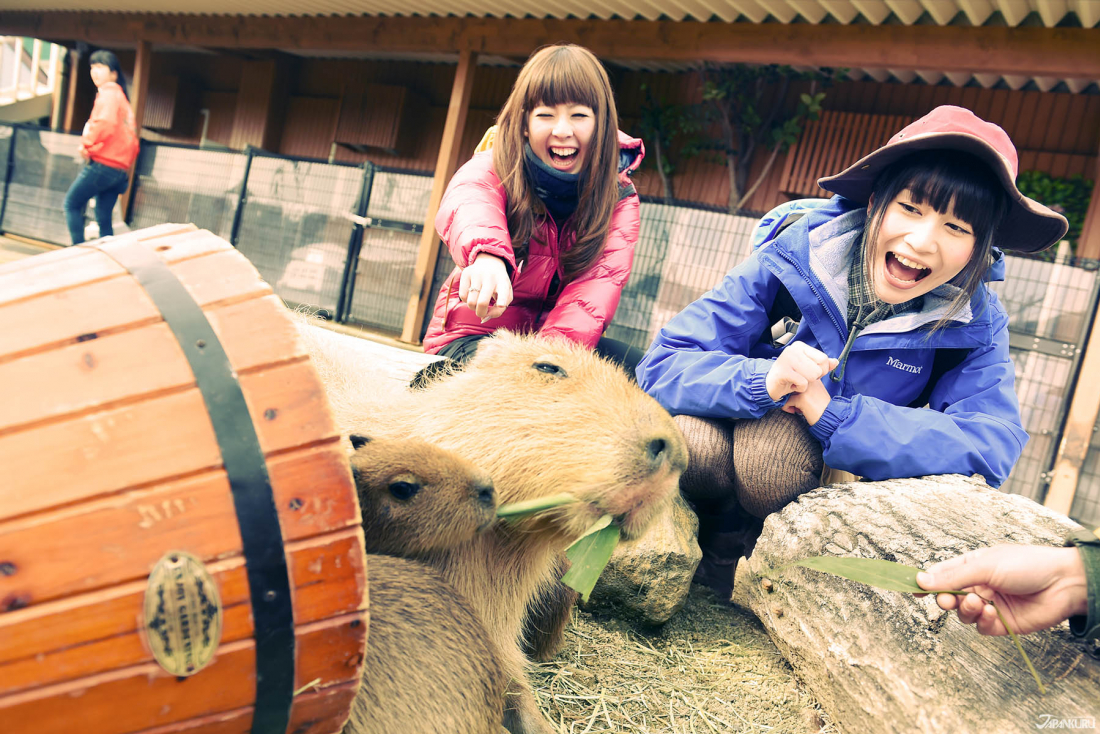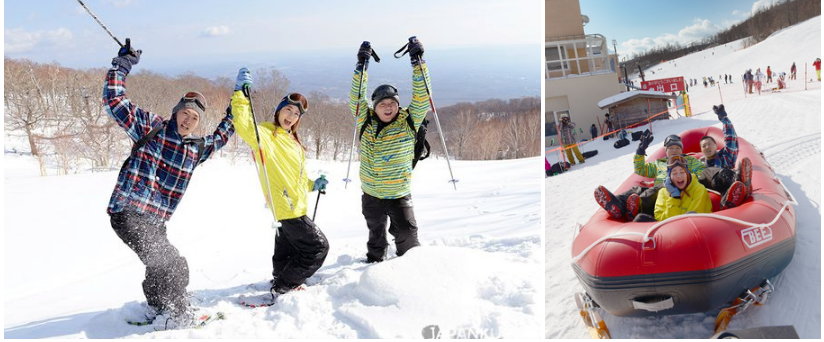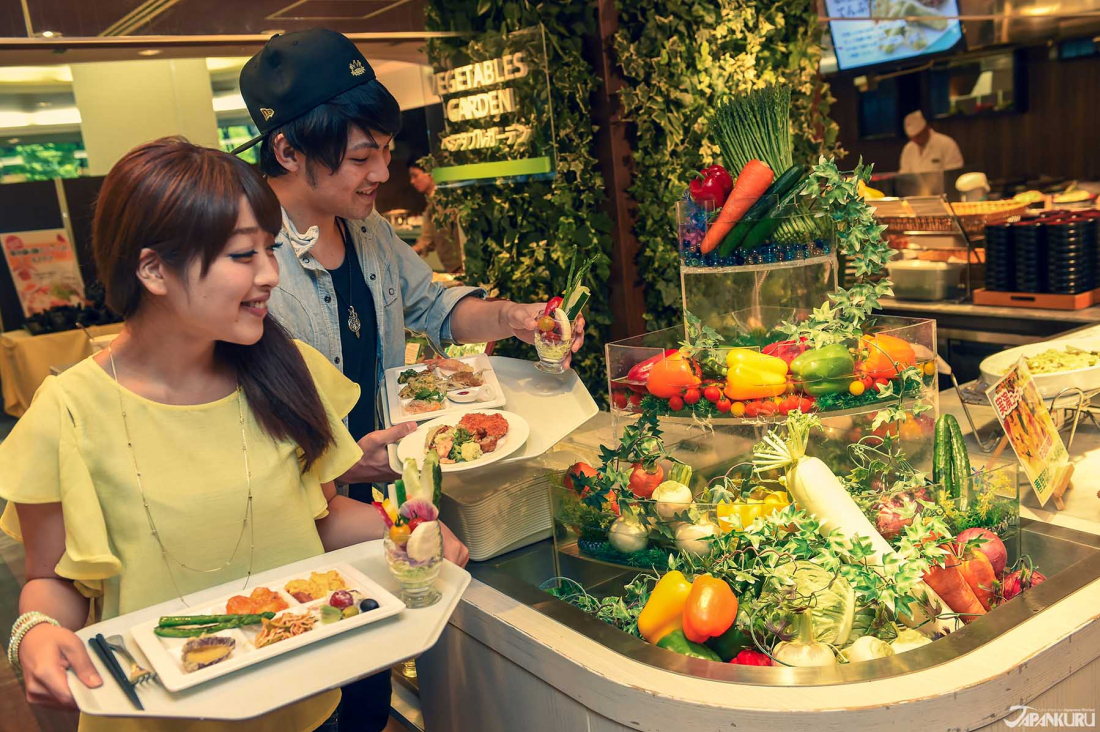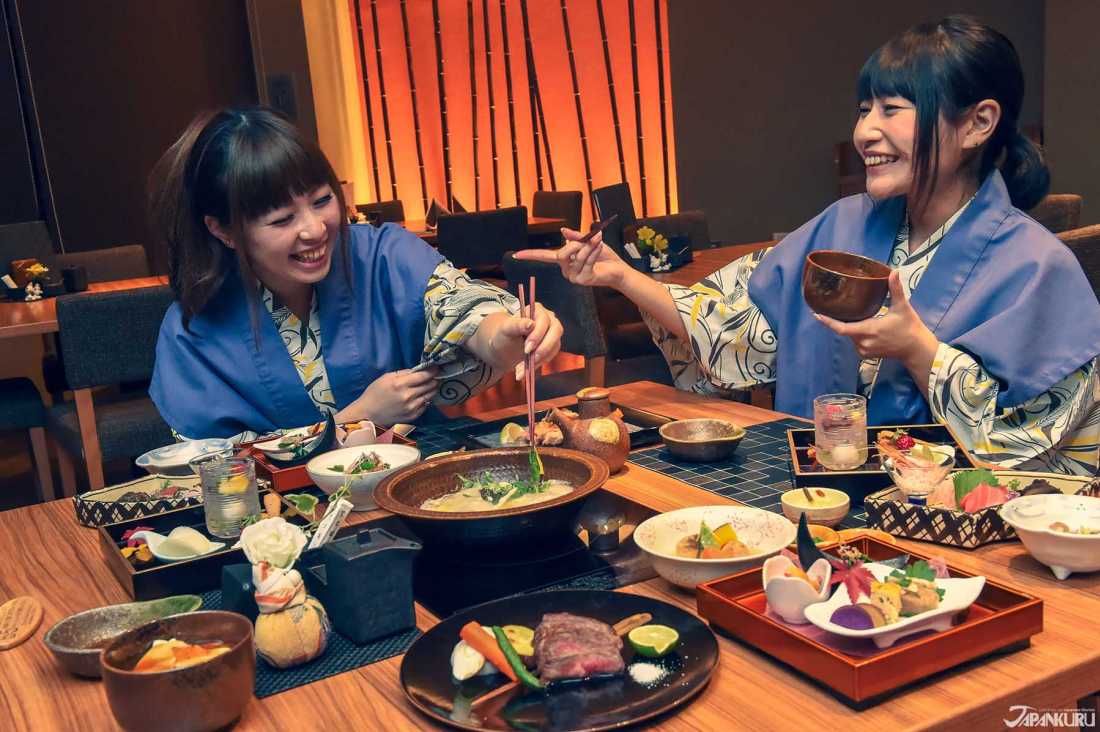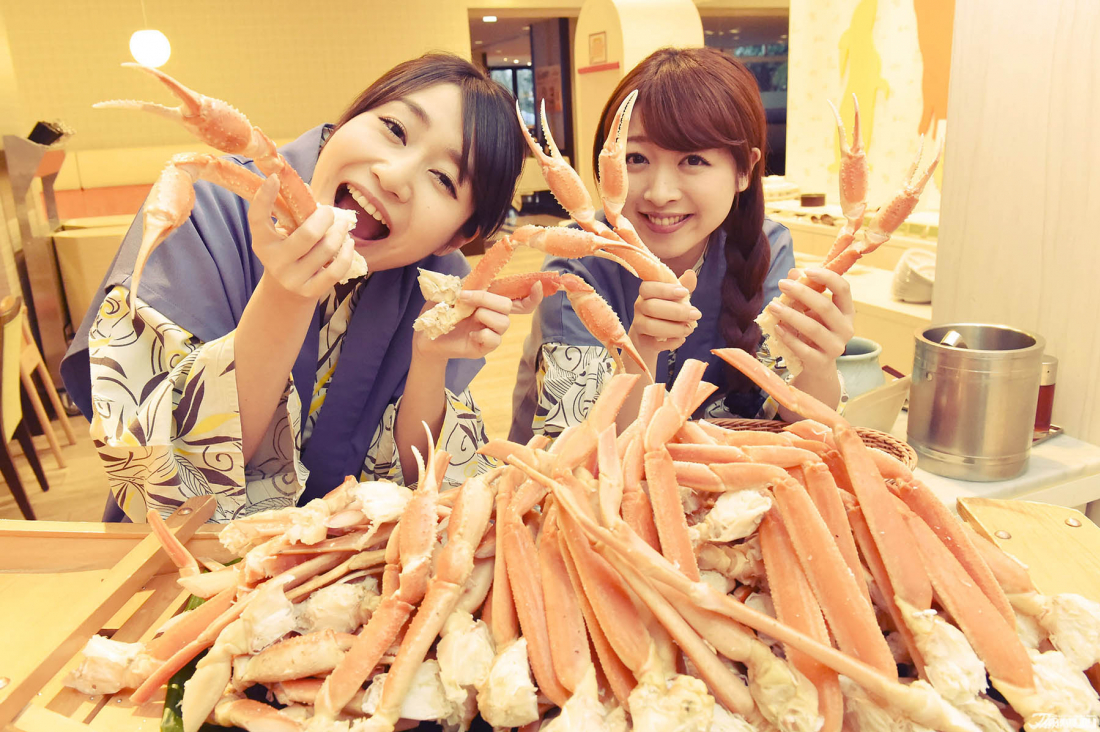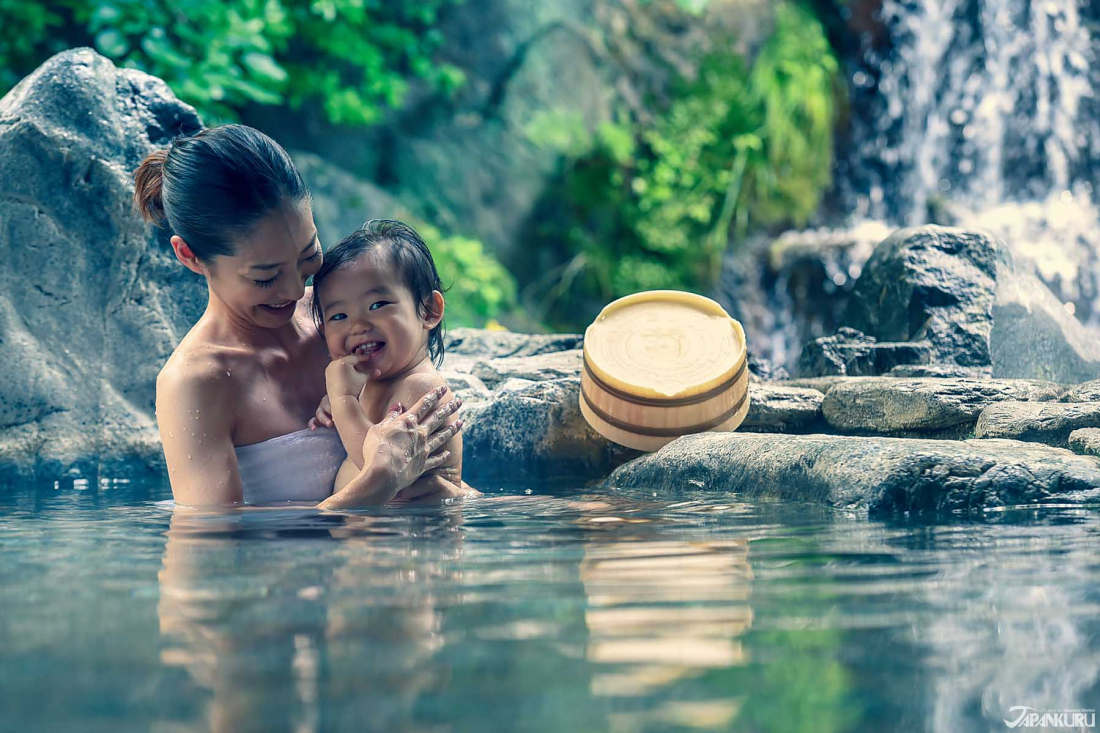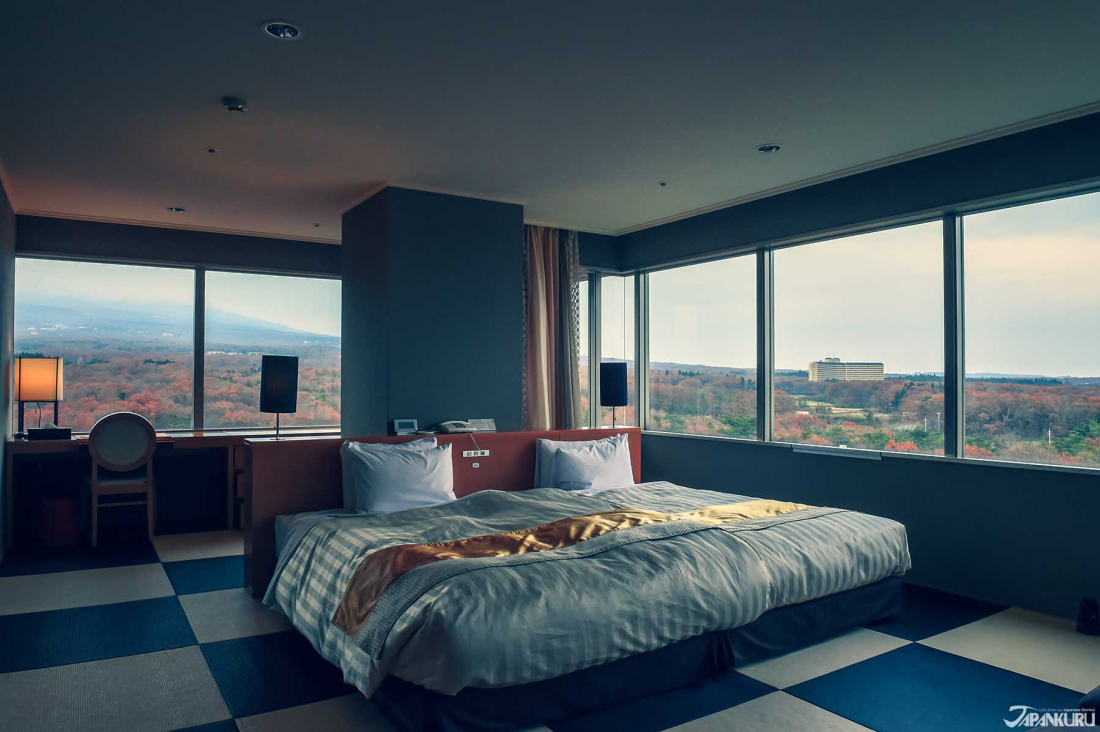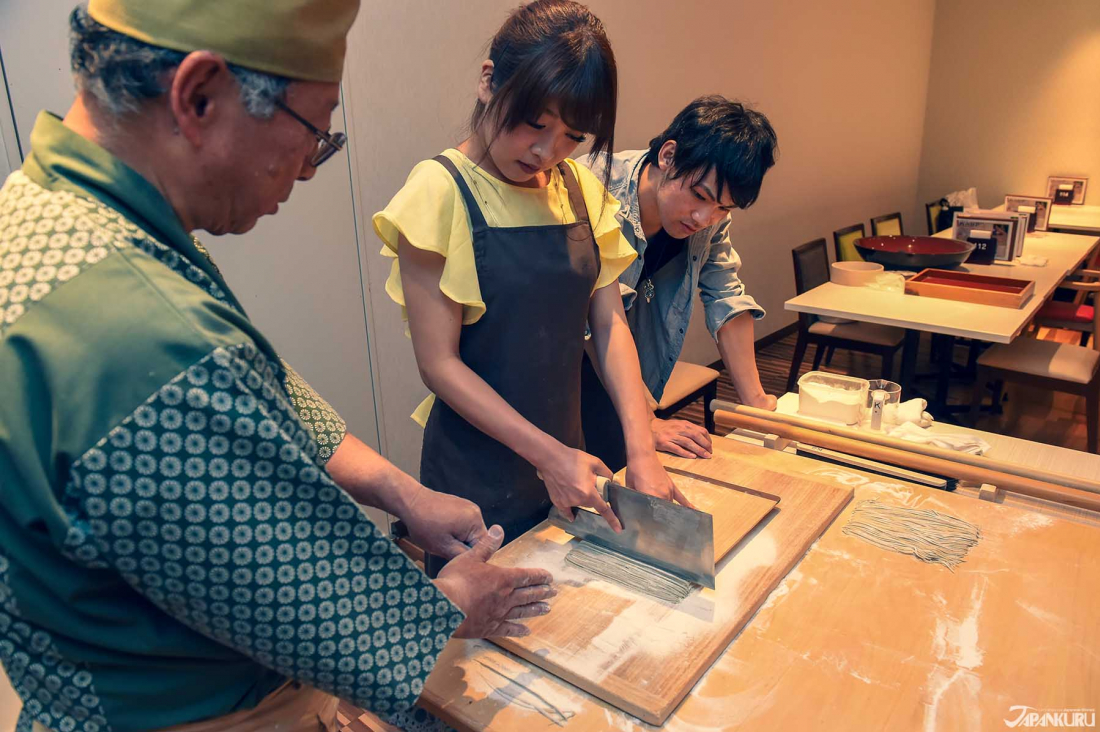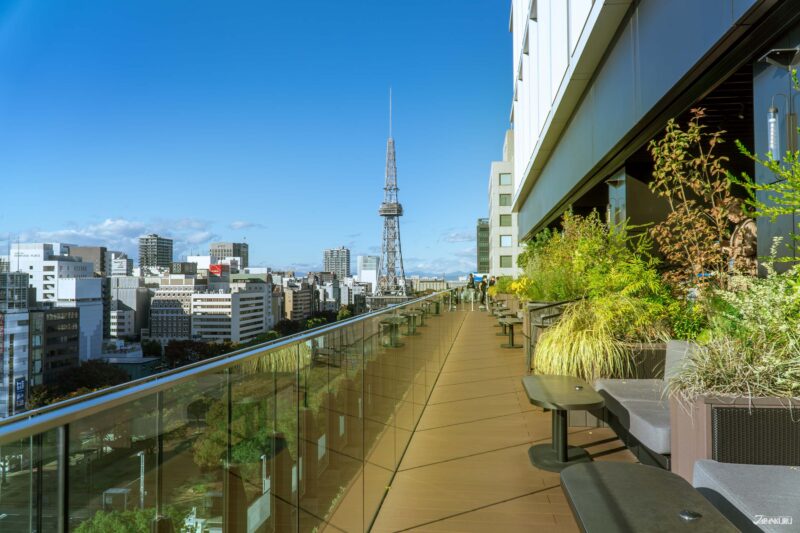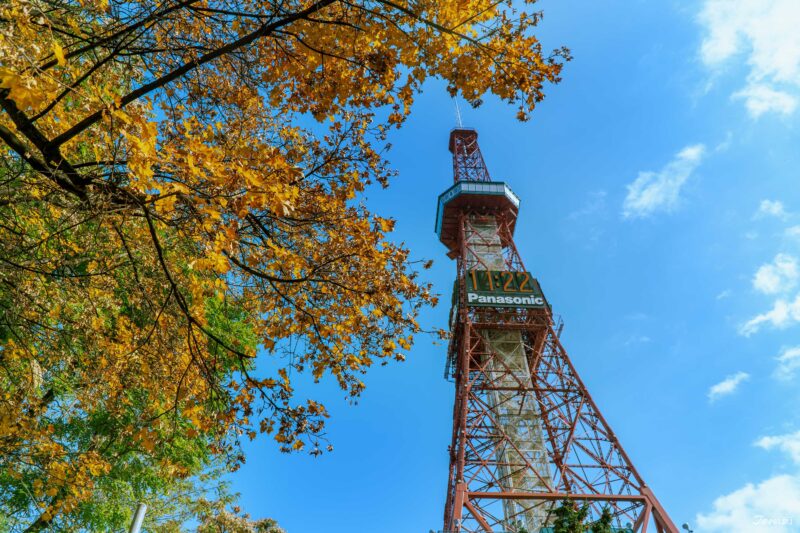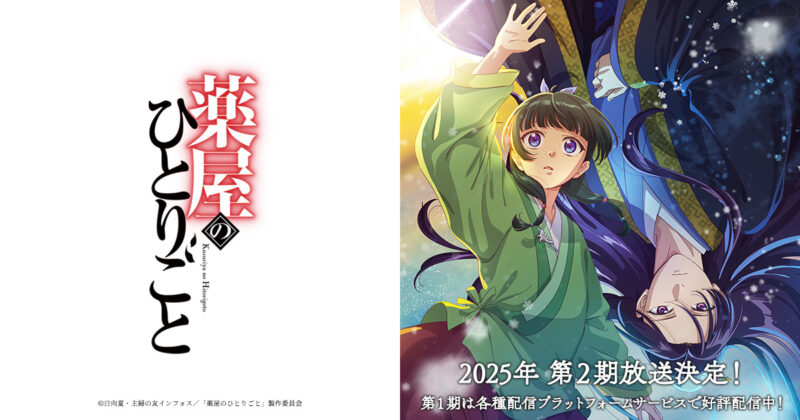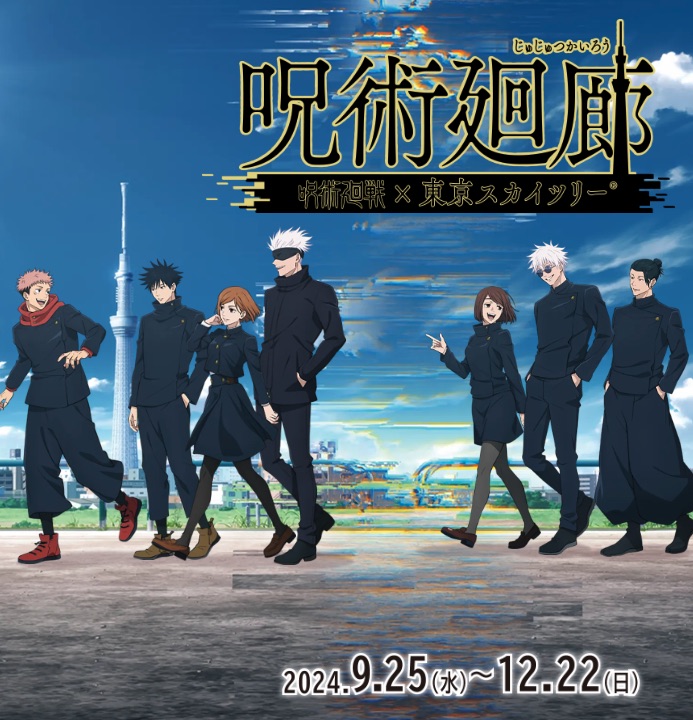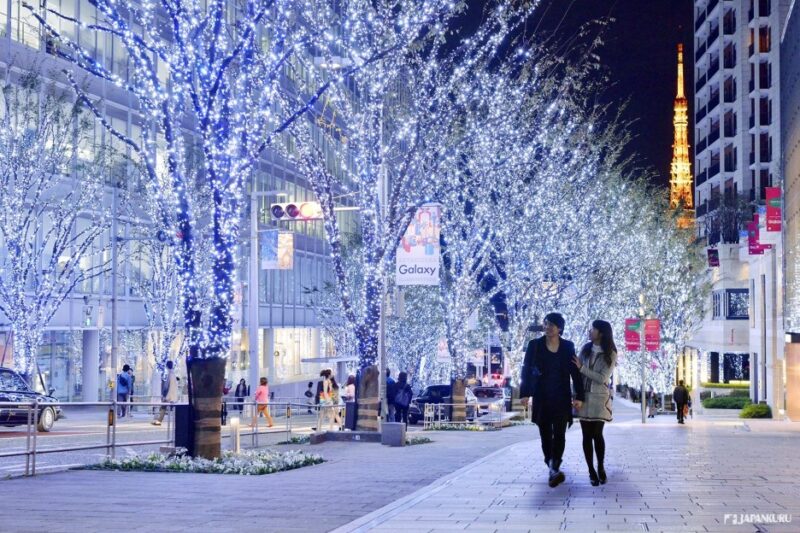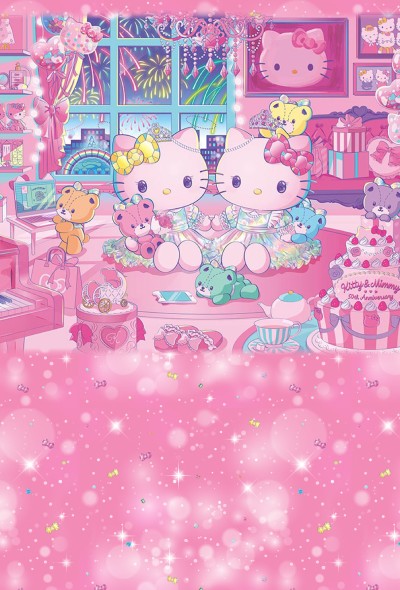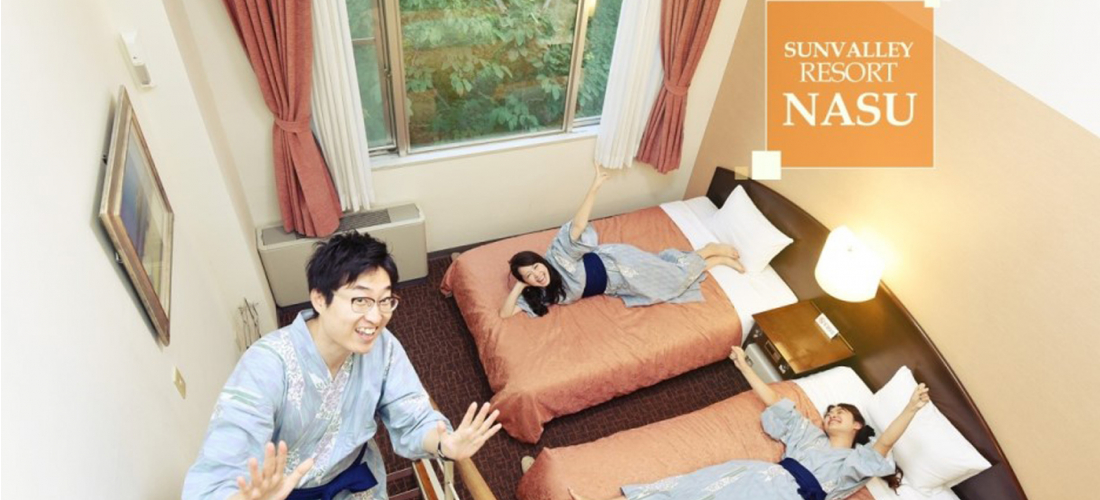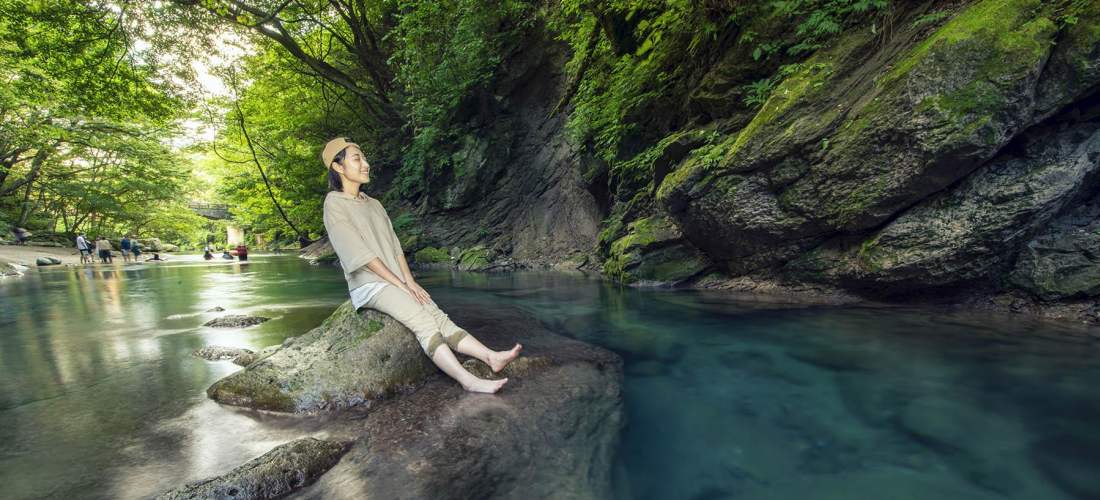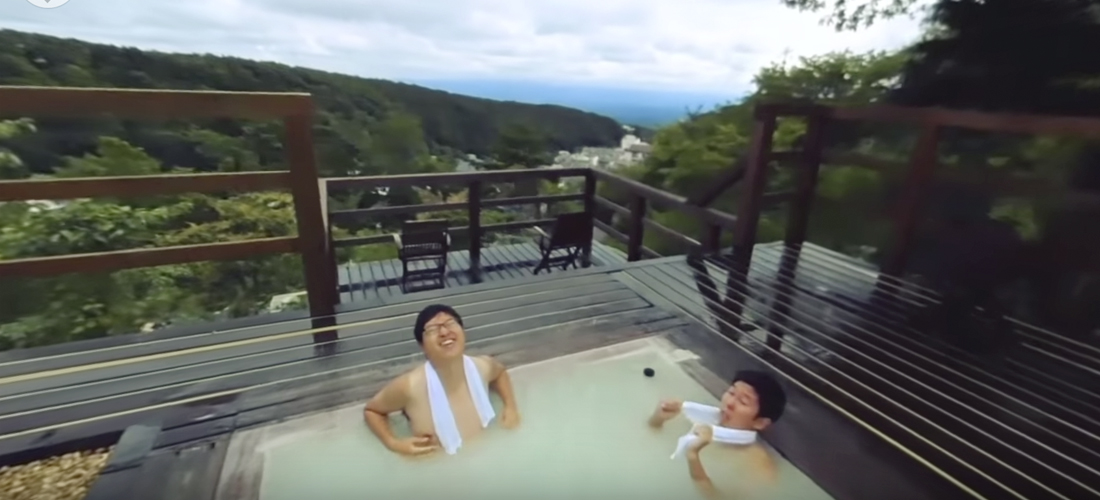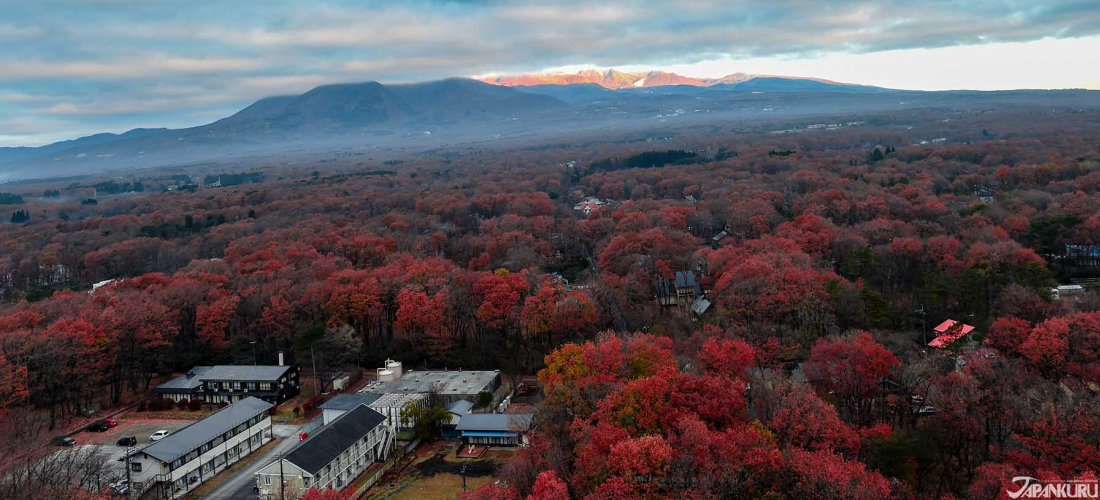
CONTENTS
North of Tokyo, on the edge of Tochigi Prefecture, you’ll find the town of Nasu, full of gorgeous natural scenery and extensive resort facilities. The area is so relaxing that it’s become a favorite of Japan’s recent emperors, and current imperial family members visit Nasu regularly. With such a royal recommendation, you might already be planning your next trip, but there’s plenty to be said for Nasu even without mentioning the region’s eminent guests. So let the Japankuru team walk you through the seasonal charms of Nasu, and why we highly recommend a stay at Hotel Epinard Nasu.
Why Visit the Nasu Highlands?
The Nasu Highlands (Nasu Kogen, 那須高原)
& Hotel Epinard Nasu
Scattered across the slopes of the volcanoes that make up Mount Nasu (那須岳), the Nasu Highlands area is known for picturesque natural scenery and luxurious hot springs, or onsen (温泉) as they're called in Japanese. That's undoubtedly why the Nasu Imperial Villa was built in the highlands in 1926, and the imperial family continues to visit regularly to this day.
While travelers can't stay the night in the Nasu Imperial Villa, just a few kilometers away there's the perfect replacement. Hotel Epinard Nasu seems a little like its own imperial retreat, and if you stay the night you and your family might just feel like royalty as well. You can always visit the Imperial Villa's gardens if you want, but the facilities at the hotel sure won't leave you wanting.
Easy Access!
Nasu has been a popular destination for a long time, but until recently many visitors have rented cars (or taken their own vehicles) to get there. Although Hotel Epinard Nasu isn't very far from the big city of Tokyo, it's tucked away in the natural enclave of the Nasu Highlands, making it a little removed from busy train and bus routes. Rental cars are still a pretty convenient way to give yourself a little freedom in the area.
Image Source: Official Website
However! The hotel now runs a direct shuttle bus from Tokyo Station and Ikebukuro Station, two of the most convenient stations in the capital city. That means that it's easier than ever to get there, and explore some of Japan's most scenic natural landscapes.
Access Options:
① Direct shuttle bus from Tokyo Station or Ikebukuro Station.
(Just make your reservation when you book your room!)
or
② Take the train to Nasu Shiobara Station, then find the Hotel Epinard Nasu shuttle bus or hop in a taxi.
(It's about 30 min. from Nasu Shiobara Station to the hotel.)
Seasonal Charms
In Japan, Autumn Means a Trip to Nasu!
And it's not hard to see why. Every fall, the heavily forested Nasu Highlands turn a fiery red, making it an ideal spot to participate in Japanese "koyo" (紅葉, or autumn foliage viewing).
Hiking
With such photogenic hills and valleys spread across the Nasu area, hiking is an obvious thrill. Clamber through the brush and admire the mountainsides that rise up around you, covered in Nasu's autumn foliage.
The variety of plants make for a colorful collage of greens, oranges, and reds that paint the scenery like an impressionist masterpiece.
The Nasu Ropeway
If you'd like to admire the view, but aren't quite up to a full day of hiking, there's always the Nasu Ropeway! Make your way into the hills inside a cable car, and watch the terrain open up beneath you. Since the ropeway is an easier trip than a strenuous hike, it's perfect for family travel with older and younger family members alike.
Nasu Ropeway (那須ロープウェイ)
215 Mt. Nasudake, Ooaza Yumoto, Nasu-machi, Nasu-gun, Tochigi
Open: March ~ November
Official Website (jp)
Hot Springs
Known as an onsen resort, Nasu is full of steaming baths filled with natural hot spring water. Some of them are as old as 1,300 years, with water famed for its high quality.
The Killing Stone (殺生石, Sessho-seki)
It should be safe to visit now, but it's said that once upon a time the village surrounding this area was haunted by the spirit of a nine-tailed fox. This mischevious fox was turned into a boulder by a Buddhist priest who came and performed a series of rituals to save the village, but they say that this rock, the"Killing Stone" or Sessho-seki, will still kill you if you touch it.
If you're a little less inclined to believe in local legend, you might be convinced that the Killing Stone is just one of the many rocks that have found their way to this small valley. We still wouldn't touch it, though!
Of course, the area around the stone transforms in fall, just like the rest of Nasu. The once green surroundings explode into autumn color.
The Killing Stone (Sessho-seki, 殺生石)
182 Yumoto, Nasu-machi, Nasu, Tochigi
Nasu Animal Kingdom
Nasu isn't known for its local wildlife, but when it comes to animals from all over the world, they've got 'em! Nasu is home to multiple zoo-like facilities, with Nasu Animal Kingdom being particularly well-known for animal performances. Of course, you can spend all your time with the capybaras instead, if you want.
Nasu Animal Kingdom (那須どうぶつ王国)
1042-1 Oshima, Nasu, Nasu District, Tochigi
Weekdays 10:00 – 16:30/Weekends 9:00 – 17:00 (Winter: ~16:00)
Official Website (en)
When Winter Comes, It’s Time to Ski!
When snow starts to fall on Nasu's reddish-brown treetops, that means it's time to break out those skis (or snowboards, or tubes)! Tochigi isn't necessarily famous for its snow, but you'll find some excellent ski runs right by Hotel Epinard Nasu.
The Benefits of Staying at Hotel Epinard Nasu
Reason ① Family-Friendly Facilities
Hotel Epinard Nasu has an entire floor entirely devoted to family rooms, made specifically to cater to families with kids of all ages. Not only are the rooms and hallways decorated with a little extra flair, but furniture is made to be accessible to younger children, there's nowhere to fall down from and nothing pointy to fall onto, plus – there are toys!
Hotel Epinard Nasu also does everything they can to make mealtime a nice time for everyone, and avoid stress. The family floor includes a buffet restaurant set up so that even young children can have a little independent fun, and make their own plate (with maybe just a little parental guidance)! Other days of the week, adult family members can head to a relaxing evening at one of the hotel's normal restaurants and bars, without worrying about boring the kids. Little ones love the chance to play with babysitters and check out toys of all kinds in the Piyo Piyo Room.
Reason ② Delicious Food and Great Date Spots
Whether you want to sample the rich variety of local produce…
… or indulge in a meal that's a little more deluxe, you're bound to find something you'll like at one of Hotel Epinard Nasu's seven different restaurants, cafes, and lounges. They've got French cuisine and traditional Japanese fare, fresh-baked bread and desserts made with local Nasu dairy topped with Tochigi's famous strawberries. (Try the soft-serve ice cream if you see it, it's a Nasu specialty.) There's even a karaoke bar and a luxe buffet with a little of everything.
When you want dinner with a view, this is clearly the place to be.
And with options like this, nobody has any reason to get crabby.
Reason ③ Alpacas!!
Hotel Epinard Nasu's team of alpacas are most often seen at the hotel's weddings, when they can be hired to participate in the festivities. That's right, if you get married at Hotel Epinard Nasu, you too can have an alpaca attend your wedding!
Even if you're not getting married with the Nasu alpacas in attendance, you might just be able to meet one. When the alpacas finish up with the majority of their work, which comes in the spring and summer, Nasu Animal Kingdom sets up special limited-time events where guests can meet an alpaca right in front of the hotel! Check before you arrive – there might just be an alpaca waiting to greet you!
Reason ④ Onsen, and Other Resort Luxuries
Hotel Epinard Nasu houses the largest open-air hot spring bath in the area, alongside jacuzzis, saunas, swimming pools, and big inside baths made fragrant with Japanese cypress wood. The hotel onsen draw their water from nearby sources, just like the famous local hot springs that date back hundreds of years.
After melting away the fatigue of travel in the onsen, you can move on to one of a variety of massages (there are literally three different spas on-site!), or instead take a nap on your spacious hotel bed.
Reason ⑤ Activities and Workshops
Last but not least, Hotel Epinard Nasu offers a huge variety of workshops and cultural experiences. Try your hand at making soba noodles, then taste them to sample your own handiwork!
Take a pottery class, or make some matching accessories for yourself and a friend. There are even workshops where you can learn to create tiny glass figurines – and put them in a snowglobe if you want!
Hotel Epinard Nasu
As the weather cools, the surroundings only get more beautiful.
While the imperial family often visits Nasu in late summer, we highly recommend a trip over as the season changes from fall to winter. It's hard to beat the hillsides covered in colorful foliage, but winter snow adds an element of lacy white elegance to the landscape, making for a beautiful view as you wake up in your cozy bed or soak in Hotel Epinard Nasu's hot spring baths.
Have you been to Nasu, or are you thinking about staying over at Hotel Epinard Nasu after reading this? Let us know all about your experience, and share some of your pictures with us on twitter, instagram, and facebook!
Details
NAME:Hotel Epinard Nasu
MAP
ACCESS:Nasu Shiobara Station
CONTACT TEL:0287-78-6000
COMMENT
FEATURED MEDIA
VIEW MORE
A Tokyo Winter Must-See: Tokyo Mega Illumination Event Period: November 2, 2024 ~ January 12, 2025 *Closed Nov 4~8, Dec 1~6, Dec 25~ Jan 1. End date may be subject to change. Hours: 16:30 – 21:00 (final admission 20:00) *Opening hours may vary depending on scheduled events or congestion, please check the official website for details. Directions: 2 min. walk from Tokyo Monorail Oikeibajo-Mae Station, 12 min. walk from Keikyu Tachiaigawa Station #japankuru #tokyowinter #tokyomegaillumination #megaillumination2024 #tokyocitykeiba #도쿄메가일루미네이션 #tokyotrip #oiracecourseillumination

Tokyo Shopping Spot Recommendation: New Balance Kichijoji #newbalance #newbalancekichijoji #newbalancejapan #japanesesneakerheads #shoppinginjapan #japantrip #도쿄여행 #도쿄쇼핑 #뉴발란스 #일본한정 #일본패션 #日本購物 #日本買衣服 #NB #日本時尚 #東京購物 #รองเท้าnewbalance #นิวบาลานซ์ #รองเท้าผ้าใบ #ช้อปปิ้ง #คิจิโจจิ #japankuru

See Kyoto Clearly With Your New Glasses #japankuru #kyoto #jins #교토여행 #진즈 #京都 #교토수족관 #가모가와 #kamogawa #kyotoaquarium

The First Japanese Converse Flagship: CONVERSE STORE HARAJUKU #japankkuru #conversejp_pr #conversejapan #harajuku #tokyotrip #converse #tokyoshopping #匡威 #帆布鞋 #東京購物 #原宿 #日本時尚 #일본쇼핑 #일본컨버스 #일본한정 #하라주쿠 #일본패션 #일본스트릿 #รองเท้าconverse #รองเท้าผ้าใบ #ช้อปปิ้ง #ฮาราจูกุ #คอนเวิร์ส

Japanese Makeup Shopping • A Trip to Kamakura & Enoshima With Canmake’s Cool-Toned Summer Makeup #pr #canmake #enoshima #enoden #에노시마 #캔메이크 #japanesemakeup #japanesecosmetics

⚔️The Robot Restaurant is gone, but the Samurai Restaurant is here to take its place. Check it out, and don't forget your coupon! 🍣신주쿠의 명소 로봇 레스토랑이 사무라이 레스토랑으로 부활! 절찬 쿠폰 발급중 💃18歲以上才能入場的歌舞秀,和你想的不一樣!拿好優惠券去看看~ #tokyo #shinjuku #samurairestaurant #robotrestaurant #tokyotrip #도쿄여행 #신주쿠 #사무라이레스토랑 #이색체험 #할인이벤트 #歌舞伎町 #東京景點 #武士餐廳 #日本表演 #日本文化體驗 #japankuru #japantrip #japantravel #japanlovers #japan_of_insta

Japanese appliance & electronics shopping with our KOJIMA x BicCamera coupon! 用JAPANKURU的KOJIMA x BicCamera優惠券買這些正好❤️ 코지마 x 빅 카메라 쿠폰으로 일본 가전 제품 쇼핑하기 #pr #japankuru #japanshopping #kojima #biccamera #japaneseskincare #yaman #dji #osmopocket3 #skincaredevice #日本購物 #美容儀 #相機 #雅萌 #日本家電 #일본여행 #면세 #여행꿀팁 #일본쇼핑리스트 #쿠폰 #일본쇼핑 #일본브랜드 #할인 #코지마 #빅카메라 #japankurucoupon

Odaiba's DiverCity Tokyo Plaza is home to the famous real-size 20m-tall Unicorn Gundam, and the popular shopping center has even more Gundam on the inside! Check out the Gundam Base Tokyo on the 7th floor for shelves upon shelves of Gunpla, and the Gundam Base Tokyo Annex on the 2nd floor for cool anime merchandise. Both shops have tons of limited-edition items! #pr #odaiba #tokyo #tokyotrip #japantrip #japantravel #PR #divercity #divercitytokyoplaza #tokyoshopping #gundam #unicorngundam #gundambasetokyo #anime #otaku #gunpla #japankuru #오다이바 #다이바시티도쿄 #오다이바건담 #건담 #일본건담 #건프라 #건담베이스도쿄






